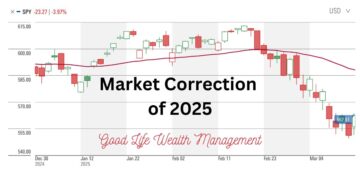With ultra low yields today, more investors are asking if you really need to have bonds in your portfolio. It’s going to depend on your objectives for your overall plan. First, let’s take a look at expected returns and how this impacts your allocation.
The primary role of bonds is to reduce the risk of a stock portfolio. Bonds fluctuate a lot less and most are relatively low risk. The trade-off is that they have a lot lower return than stocks. Of course, the stock market has a negative return in approximately one of every five or so years. From 1950 through 2019, 15 of 70 years had a negative return in the S&P 500 Index. Bonds are more consistent, and they can help smooth out your overall returns. In years when stocks are down, you can rebalance by selling some bonds and buying stocks.
The more bonds you have, the more you reduce stock risk, but also the more you probably lower your long-term returns. With the 10-year Treasury bond yielding only 0.721% this week, bonds offer almost no return on their own. Bonds used to offer safety and income, but today, you are really only owning them just for safety.
Portfolio Asset Allocation
We describe a portfolio by the percentage it has in stocks versus bonds. A 70/30 portfolio, for example, has 70% stocks and 30% bonds. Our asset allocation models target different levels of stock and bond exposure:
- Ultra Equity (100% Equity)
- Aggressive (85/15)
- Growth (70/30)
- Moderate (60/40)
- Balanced (50/50)
- Conservative (35/65)
Expected Returns
Next, let’s consider what Vanguard projects for the next 10 years for annualized asset returns, as of June 2020:
- US Equities: 5.5% to 7.5%
- International Equities: 8.5% to 10.5%
- US Aggregate Bond Market: 0.9% to 1.9%
Let’s calculate hypothetical portfolio returns using these assumptions. If we take the midpoint of stock projected returns, we have 6.5% for US Stocks and 9.5% for International Stocks. If we invest equally in both, we’d have an 8% return. For our bond return, we will take the midpoint of 1.4%. Now, here’s a simple blend of those expected returns when we combine them in a portfolio.
| Portfolio | Projected 10 Year Return |
| 100% Equities | 8.00% |
| 90% Equities / 10% Bonds | 7.34% |
| 80% Equities / 20% Bonds | 6.68% |
| 70% Equities / 30% Bonds | 6.02% |
| 60% Equities / 40% Bonds | 5.36% |
| 50% Equities / 50% Bonds | 4.70% |
| 40% Equities / 60% Bonds | 4.04% |
| 30% Equities / 70% Bonds | 3.38% |
| 20% Equities / 80% Bonds | 2.72% |
| 10% Equities / 90% Bonds | 2.06% |
| 100% Bonds | 1.40% |
If you simply want the highest return without regard to volatility in a portfolio, you could invest 100% into stocks. Moreover, any addition of bonds should reduce your long-term returns. Of course, this assumes that returns are simply linear. In a real portfolio, there would be up years and down years in stocks. That’s when you would rebalance, which could be beneficial.
For young investors, in their 20’s, 30’s, or 40’s, you probably should be more aggressive in your asset allocation. For some, it may even make sense to be 100% in stocks. If you have 20 or more years to retirement, and aren’t scared of stock market fluctuations, being aggressive is likely going to offer the highest return.
The 10-year expected return of stocks is not bad, 8% combined today. That’s a little bit lower than the historical averages, but still an attractive return. Bond returns, however, are expected to be very weak. Consequently, 60/40, 50/50, and more conservative portfolios, are expected to have much lower projected returns.
Retirement Planning and Your Need for Bonds
For those closer to retirement, low yields are a challenge. You want to have less volatility but also want good returns. If you are within five years of retirement, you probably want to reduce the risk of a stock market crash hurting your retirement income. Now, if the hypothetical 8% stock returns were guaranteed, our decision would be easy. But getting out of bonds today, with the market at an all time high, seems too risky. This week has certainly been a reminder that stocks are volatile.
I think most pre-retirees will want to keep their current allocation through their retirement date. After that, they may want to consider gradually reducing their bond exposure by selling bonds. There is evidence that this strategy, The Rising Equity Glidepath, is a beneficial way to access retirement withdrawals. It allows retirees to benefit from the higher expected return of stocks, while reducing their risks in the crucial 5-10 years right before and at the beginning of retirement.
Some retirees have a high risk capacity if they have ample sources of income and significant assets. If their time horizon is focused on their children or grandchildren, they can also consider a more aggressive allocation.
We want to calculate your asset mix individually. I wanted to show you what the blend of stocks and bonds is projected to return over the next decade. We’ve had strong returns from fixed income in recent years because falling interest rates push up bond prices. Going forward, it looks like bond returns are going to be quite low. We do have to consider these projected returns when making allocation decisions.
If you’re looking for advice on managing your investment portfolio today, let’s talk. Our planning process will help you address these questions and have a better understanding of your options.







